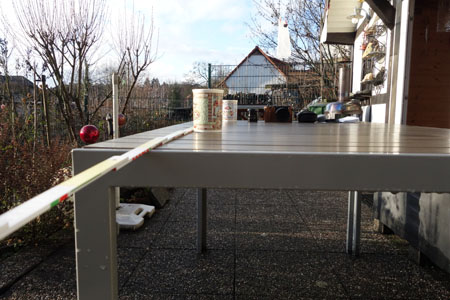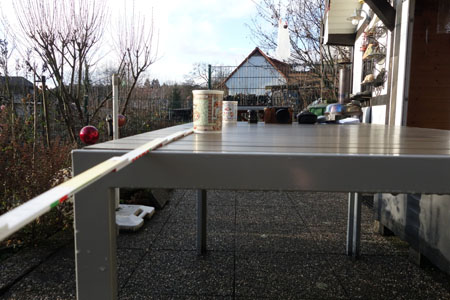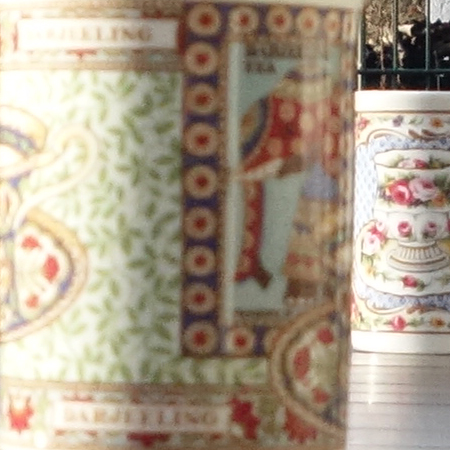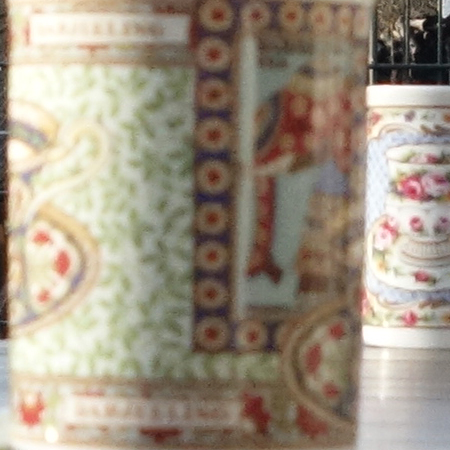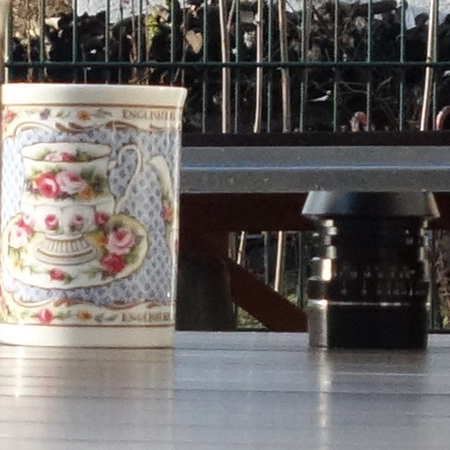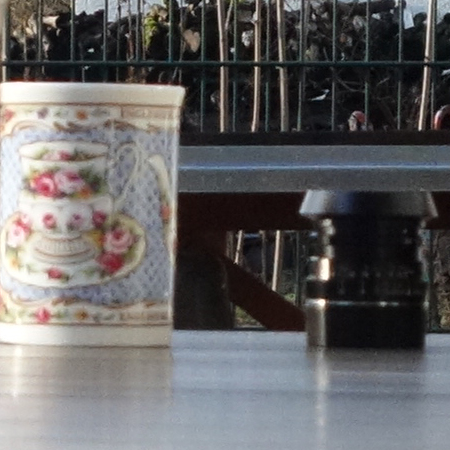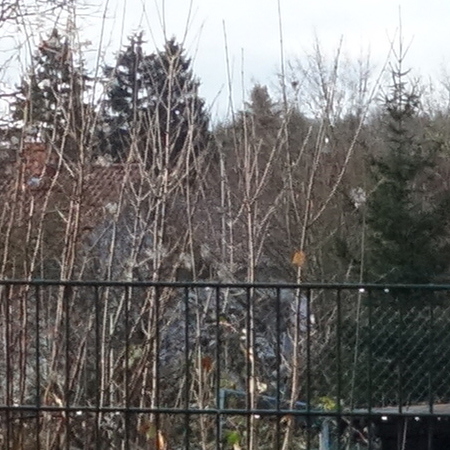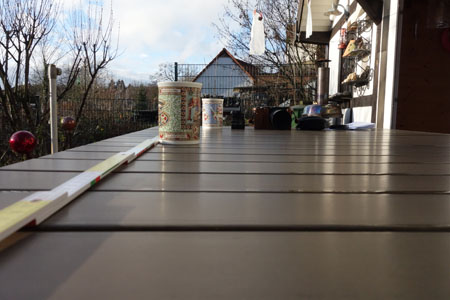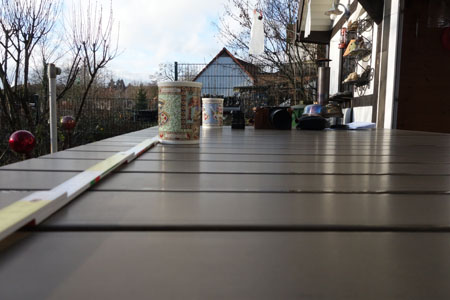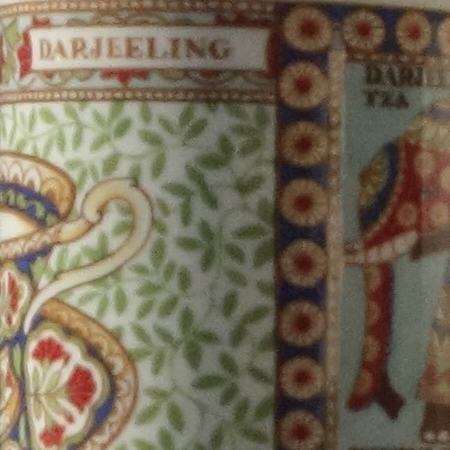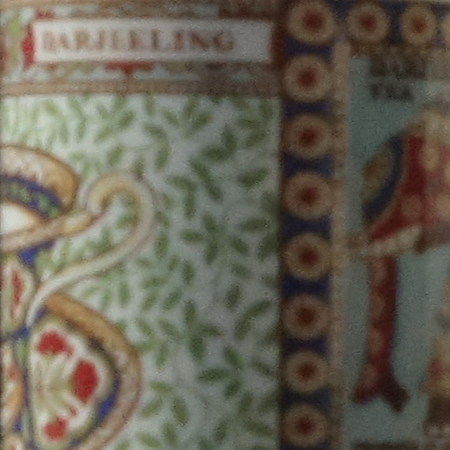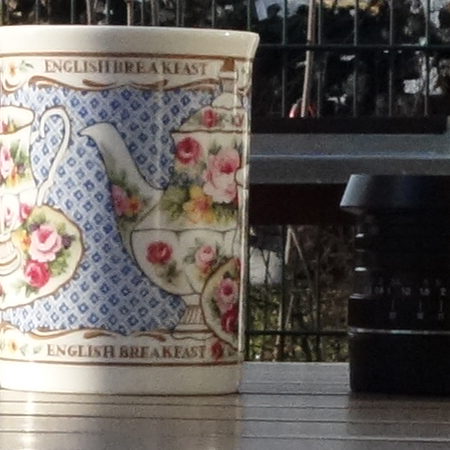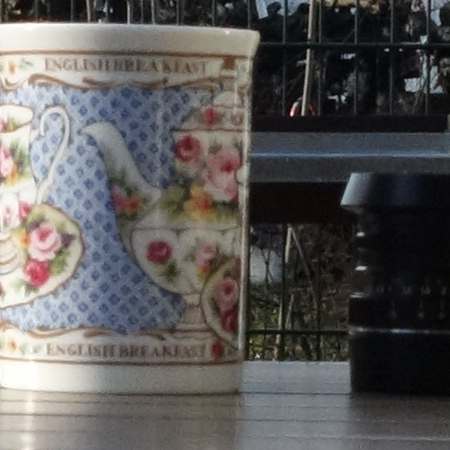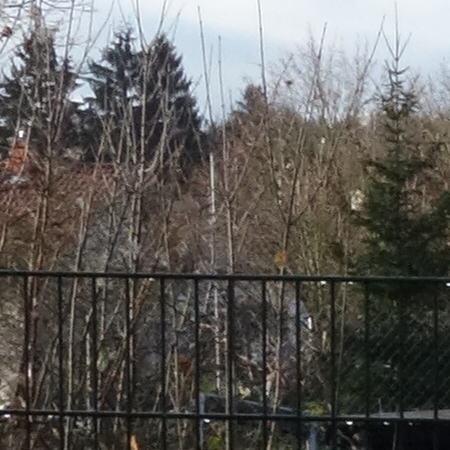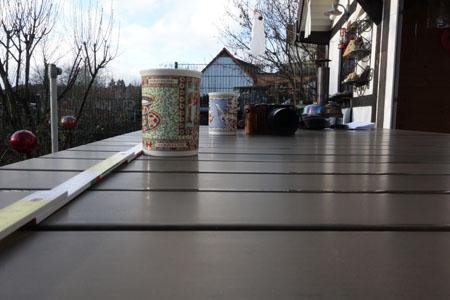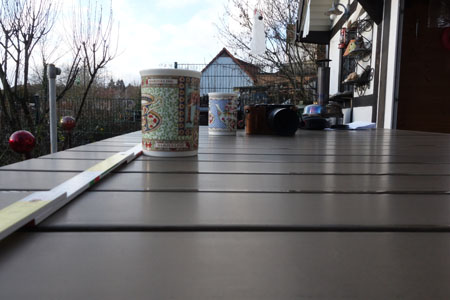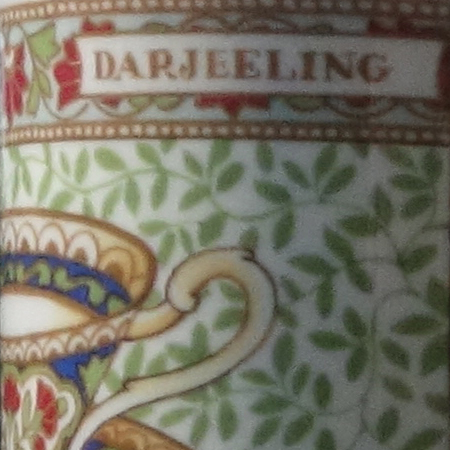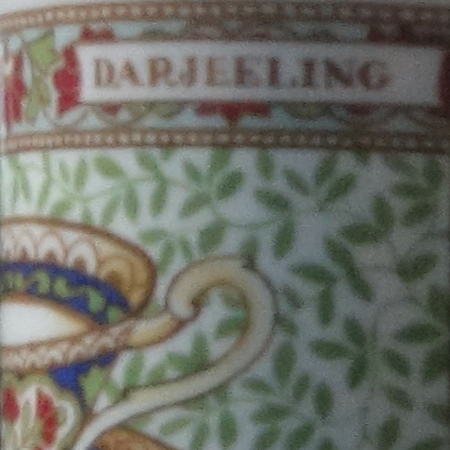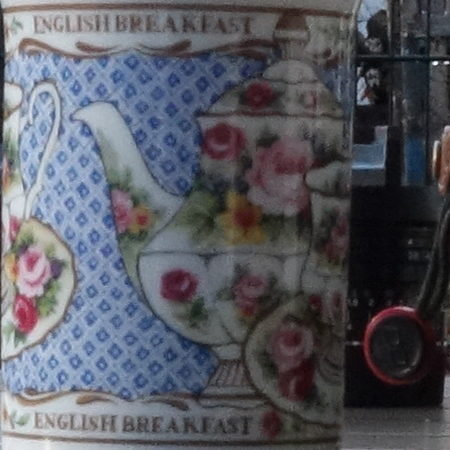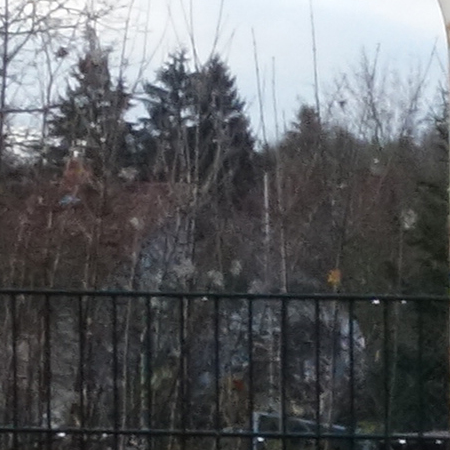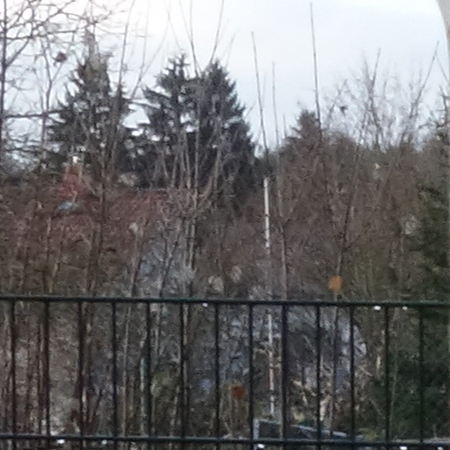Sony RX100 M1: Hyperfocal Distance vs. Infinity Comparison
Introduction | Some Numbers | Test Photos: f/5.6 | f/8 | f/11 | Diffraction Comparison | Conclusions | References
On this page, I present comparisons for the Sony RX100 M1 between shots taken at the hyperfocal distance (HFD) and at infinity with various aperture values (f/5.6, f/8, f/11). f/11 is already beyond the diffraction limit and the smallest f-number for the camera. I use these conditions to compare the traditional depth of field (DOF) approach with the approach proposed by Merklinger.
I did these tests with two other cameras, the Leica X Vario, and the Leica M. All three cameras used the same equivalent focal length of 28 mm, which result in the actual focal lengths of 10.4, 18, and 28 mm. Note that, according to the formula for the HFD (and DOF), only the real focal length is of interest. Sensor differences are not reflected in the formula (only via the crop factor for the focal length). Therefore, you may want to take a look at the pages for the Leica X Vario (18 mm) and the Leica M (Typ 240) (28 mm) to see how the results would look like (with the aperture range of the Sony RX 100 M1).
Introduction
I placed two test objects (mugs) at the hyperfocal and half the hyperfocal distance. I also took care that in the background some far away objects were visible.
- HFD condition (distance set to HFD): The mug at HFD should be sharp, whereas the mug at HFD/2 and the background at infinity should be "acceptably sharp" (as defined by the circle of confusion (CoC).
- Infinity condition (distance set to infinity): The mug at HFD should be "acceptably" sharp, whereas the mug at HFD/2 should be blurred (double the CoC), and the background at infinity should be sharp.
I took the photos at three different apertures: f/5.6, f/8, and f/11. The f-number f/11 is the smallest aperture available for the RX100 M1 and already beyond the diffraction limit (the recommendation is not to go beyond f/8 with this camera - see details). Depending on the aperture, the HFD is different: the larger the f-number, the smaller it is. This means that the objects get closer and larger (and thus, more detailed), the larger the f-number is. Only the background objects should always be about the same size.
The photos were taken with a focal length of 10.4 mm, that is an equivalent focal length of 28 mm (as in my other tests of this subject). The HDF values were taken from my HDF tables for the Sony RX100 M1. Distance was set using the spot autofocus on the mug at HFD/2, the mug at HFD and at infinity.
For each condition and aperture, I present below 100% crops of the mug at HFD/2, the mug at HFD, and a section of the background. The original photos can be downloaded by right-clicking the small versions of the photos or by clicking the "original" link.
Some Numbers
The following table lists the circles of confusion (CoC) and disks of confusion (DoC, see Merklinger method) for the conditions specified above and demonstrated in the photos below (objects at HFD/2, HFD, and infinity; f-numbers f/5.6, f/8, and f/11):
Focused at HFD (H) |
Focused at Infinity |
|||||||||||||||
| f-Number | H (m) |
CoC (mm) |
DoC (mm) |
CoC (mm) |
DoC (mm) |
Comment | ||||||||||
| N | H/2 |
H |
inf |
H/2 |
H |
10 m* |
inf |
H/2 |
H |
inf |
H/2 |
H |
inf |
10 m as "typical" distance | ||
| f/5.6 | 1.75 |
0.011 |
0** |
0.011 |
0.92 |
0** |
8.7 |
inf |
0.022 |
0.011 |
0** |
1.84 |
1.84 |
1.84 |
DoC = d = f/N = 1.84 mm | |
| f/8 | 1.24 |
0.011 |
0** |
0.011 |
0.65 |
0** |
9.2 |
inf |
0.022 |
0.011 |
0** |
1.30 |
1.30 |
1.30 |
DoC = d = f/N = 1.30 mm | |
| f/11 | 0.88 |
0.011 |
0** |
0.011 |
0.46 |
0** |
9.5 |
inf |
0.022 |
0.011 |
0** |
0.95 |
0.95 |
0.95 |
DoC = d = f/N = 0.92 mm | |
*) 10 m distance, for details see below ; **) "0" means optimal sharpness, resolution is limited by other factors (diffraction, resolving power of lens and sensor, ...)
Legend: f = focal length = 10.4 mm (real); N = f- number (exact value used in calculations); H = hyperfocal distance (HFD); CoC = circle of confusion (image field); DoC = disk of confusion (object field)
H was determined using the table for hyperfocal distances for the Sony RX100 M1. The CoC of 0.011 mm is given by the manufacturer Sony (for an 1" sensor).
According to Merklinger's formula for the DoC and its relationship with the HFD (H), the DoC is d/2 at HFD/2, when the lens is focused at HFD (H). It is zero at HFD (H), d again at twice HFD (2H), and goes beyond every limit far beyond HFD. I therefore also calculated the DoC for a distance of 10 m (see below) to get an impression of how large it is at a closer distance.
I also used the Merklinger method to find out that the CoC is double the "nominal" CoC at H/2 and the same at HFD (H) when the lens is focused at infinity (every DOF scale on a lens will tell you this).
10 m Distance
I calculated the DOC diameter Sy for a distance of Y being a multiple y of H, the HFD, according to Merklinger's formula Sy = (Y - D) / D * d and got:
- From Y = y * H we get for y:
y = Y / H with Y = object distance beyond H = D, the focus distance - Sy = (y * H - H) / H * d = (y -1) * d with D = H = focus distance, d = f / N (see legend above)
For Y = 10 m, based on it's being a multiple of H, the results are as follows (using the exact f-numbers, not the "nominal" ones):
- f/5.6 (5.66 exactly): y = 10 m / H (m) = 10 / 1.75 = 5.71 => Sy = (5.71 -1 ) * d = 4.71 * d = 4.71 * f / N = 4.71 * 10.4 / 5.66 = 8.65 mm
- f/8: y = 10 m / H (m) = 10 / 1.24 = 8.06 => Sy = (8.06 -1) * d = 7.06 * d = 7.06 * f / N = 7.06 * 10.4 / 8 = 9.2 mm
- f/11 (11.31 exactly): y = 10 m / H (m) = 10 / 0.88 = 11.36 => Sy = (11.36 - 1) * d = 10.36 * d = 10.36 * f / N = 10.36 * 10.4 / 11.31 = 9.5 mm
Thus, we get the (for me) surprising result that the DoC is about 1 cm for objects at 10 m distance for all the apertures (f/5.6, f/8, f/11) - it grows only by a Millimeter with increasing f-numbers.
A Note for Inspecting DoC
The letters on the mugs are about 3 mm high (there are also black letters that are about 2 mm in height). The patterned double lines on the "Darjeeling" mug are about 1 mm high (or thick). I list the DoC for each image so that you can compare it with these objects easily.
For these comaprisons, it is useful to remember, what Merklinger (p. 34 writes about the readability of letters:
- "As a rule-of-thumb, a disk-of-confusion equal in diameter to one-fifth
of the letter height or smaller will ensure that the letter can
be read; a disk-of-confusion equal in diameter to the letter height
will ensure that the letter cannot be read.
In between there is a gradual transition from readability to non-readability. There are a number of factors which affect readability, including the style of the letter, the shape of the opening made by the lens diaphragm, the orientation of that shape relative to the letter, the contrast of the letter against its background, and the character of the specific lens in use."
Test Photos
Note: You can download the original photos to view them on your monitor(s), or print them in the sizes you are interested in.
Aperture f/5.6 |
||
Hyperfocal Distance (1.75) |
Infinity |
|
|
Sony RX100 M1 at ISO 800 - overview (original) |
Sony RX100 M1 at ISO 800 - overview (original) |
|
|
Sony RX100 M1 - detail at HFD/2 (100% crop), DoC = 0.92 mm, f/5.6 |
Sony RX100 M1 - detail at HFD/2 (100% crop), DoC = 1.84 mm, f/5.6 |
|
|
Sony RX100 M1 - detail at HFD (100% crop), DoC = 0.92 mm, f/5.6 |
Sony RX100 M1 - detail at HFD (100% crop), DoC = 1.84 mm, f/5.6 |
|
|
Sony RX100 M1 - detail at infinity (100% crop), DoC = 0.92 mm, f/5.6 |
Sony RX100 M1 - detail at infinity (100% crop), DoC = 1.84 mm, f/5.6 |
|
Aperture f/8 |
||
Hyperfocal Distance (1.24 m) |
Infinity |
|
|
Sony RX100 M1 at ISO 800 - overview (original) |
Sony RX100 M1 at ISO 800 - overview (original) |
|
|
Sony RX100 M1 - detail at HFD/2 (100% crop), DoC = 0.65 mm, f/8 |
Sony RX100 M1 - detail at HFD/2 (100% crop), DoC = 1.30 mm, f/8 |
|
|
Sony RX100 M1 - detail at HFD (100% crop), DoC = 0.65 mm, f/8 |
Sony RX100 M1 - detail at HFD (100% crop), DoC = 1.30 mm, f/8 |
|
|
Sony RX100 M1 - detail at infinity (100% crop), DoC = 0.65 mm, f/8 |
Sony RX100 M1 - detail at infinity (100% crop), DoC = 1.30 mm, f/8 |
|
Aperture f/11 |
||
Hyperfocal Distance (0.88 m) |
Infinity |
|
|
Sony RX100 M1 at ISO 800 - overview (original) |
Sony RX100 M1 at ISO 800 - overview (original) |
|
|
Sony RX100 M1 - detail at HFD/2 (100% crop), DoC = 0.46 mm, f/11 |
Sony RX100 M1 - detail at HFD/2 (100% crop), DoC = 0.92 mm, f/11 |
|
|
Sony RX100 M1 - detail at HFD (100% crop), DoC = 0.46 mm, f/11 |
Sony RX100 M1 - detail at HFD (100% crop), DoC = 0.92 mm, f/11 |
|
|
Sony RX100 M1 - detail at infinity (100% crop), DoC = 0.46 mm, f/11 |
Sony RX100 M1 - detail at infinity (100% crop), DoC = 0.92 mm, f/11 |
Diffraction Comparison
The distant crops at f/5.6 and f/8 are compared with the crop at f/11:
|
Sony RX100 M1 at ISO 800 - detail at infinity (100% crop) - f/5.6 |
Sony RX100 M1 at ISO 800 - detail at infinity (100% crop) - f/8 |
|
|
Sony RX100 M1 at ISO 800 - detail at infinity (100% crop) - f/11 |
Sony RX100 M1 at ISO 800 - detail at infinity (100% crop) - f/11 |
Conclusions
Just a few observations from viewing the photos on a computer screen at 100% (or 200% for a Retina display):
- The mug at half the hyperfocal distance is always more blurred than the one at hyperfocal distance (which should be optimal sharp in the left column).
- It is probably a matter of personal taste, whether one would judge the mug at HFD/2 as too blurred, when distance is set to infinity (as would be in line with Merklinger's simplified approach).
- The letters seem to be recognizable at about twice the height of the disk of confusion, except for the f/5.6 condition, where it might be triple the height.
- The mug at HFD should still satisfy the conventional CoC criterion when distance is set to infinity. But it appears slightly less sharp as when distance is set to HFD and thus, optimal.
- At f/11, the distant objects appear to be more blurred than at f/8. Perhaps this is an indication of diffraction, but probably, the ISO value is too high for a reliable evaluation.
Just a few observations from viewing the photos on a computer screen in full-screen mode (Retina display, 5 MP):
- It takes some attention to see any differences between the HFD and infinity version in the foreground.
- I cannot find any quality differences between the HFD and infinity versions at infinity (maybe for the f/11 versions between the fir trees if you look hard...).
- My external 20" full-HD monitor (2,3 MP) delivers similar results.
- The differences will be probably even harder to see, if at all, on a regular laptop screen (1440 x 900 pixels).
And here a few observations from prints in postcard size (6" x 4" or 15 cm x 10 cm):
- It is hard to see any differences between the HFD and infinity versions, and if so, only in the foreground.
- I cannot find any quality differences between the HFD and infinity versions at infinity on the prints.
- Larger print will probably (and definitely for much larger prints) reveal some differences, particularly in the foreground.
Finally, a few general conclusions:
- Probably, the placement of the objects as well as the HFD setting were not "precise". Therefore, take the results "with a grain of salt".
- The shots should be redone with a lower ISO value (some day in the future...).
One more important note:
- The Leica X Vario (18 mm) and the Leica M (Typ 240) (28 mm) pages show the scene at equivalent focal lengths of about 50 mm and 70 mm. I printed only a few M (Type 240) photos on postcards, no X Vario photos - the results are about the same as for the RX100 M1. But I can find differences at infinity between the HFD and the infinity versions on my Retina display in full-screen mode (and on my 20" full-HD monitor as well). Thus, the RX100 M1 might show such differences at longer focal lengths on larger monitors or larger prints as well (in theory, it should...). But it is still open whether these can be found on a regular laptop screen (1440 x 900 pixels) as well.
References
Merklinger
- Kevin Boone: Hyperfocal distances and Merklinger's method in landscape photography (www.kevinboone.net/hyperfocal.html)
- Harold M. Merklinger: The INs and OUTs of Focus - An Alternative Way to Estimate Depth-of-Field and Sharpness in the Photographic Image (Internet edition; www.trenholm.org/hmmerk/TIAOOFe.pdf)
Hyperfocal Distance, DOF
- DOFMaster Website
- Hyperfocal Distance (Wikipedia)
| 14.02.2016 |
